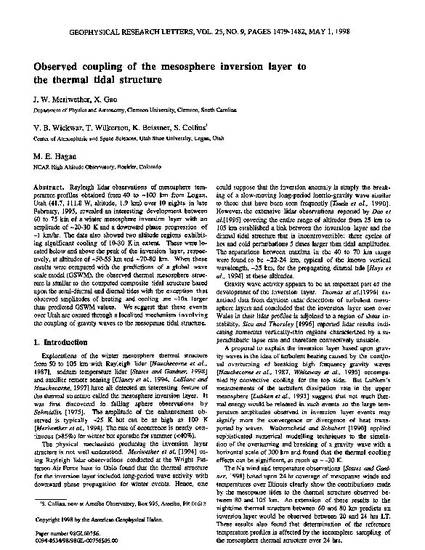
Rayleigh lidar observations of mesosphere temperature profiles obtained from 40 to ∼100 km from Logan, Utah (41.7, 111.8 W, altitude, 1.9 km) over 10 nights in late February, 1995, revealed an interesting development between 60 to 75 km of a winter mesosphere inversion layer with an amplitude of ∼20–30 K and a downward phase progression of ∼1 km/hr. The data also showed two altitude regions exhibiting significant cooling of 10–30 K in extent. These were located below and above the peak of the inversion layer, respectively, at altitudes of ∼50–55 km and ∼70–80 km. When these results were compared with the predictions of a global wave scale model (GSWM), the observed thermal mesosphere structure is similar to the computed composite tidal structure based upon the semi‐diurnal and diurnal tides with the exception that observed amplitudes of heating and cooling are ∼10x larger than predicted GSWM values. We suggest that these events over Utah are caused through a localized mechanism involving the coupling of gravity waves to the mesopause tidal structure.

Originally published by the American Geophysical Union in Geophysical Research Letters. Publisher PDF available through remote link.